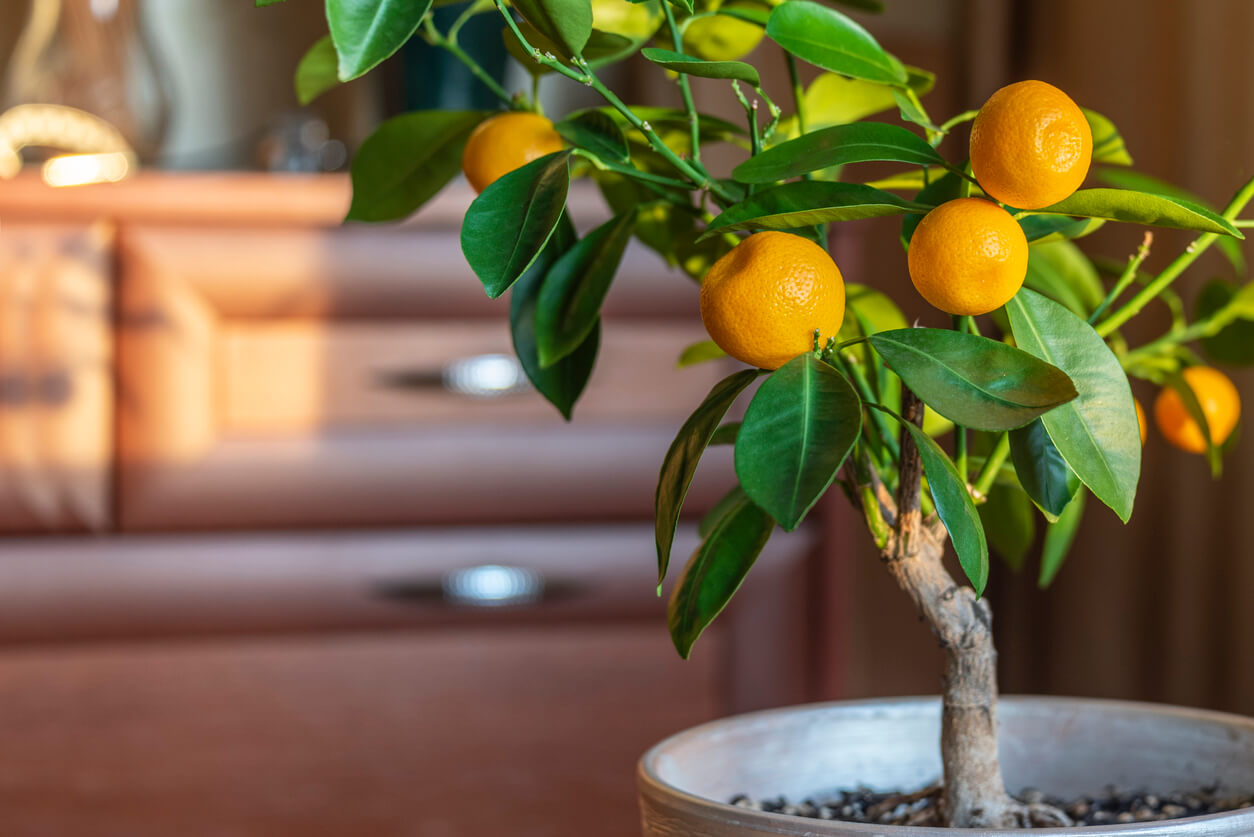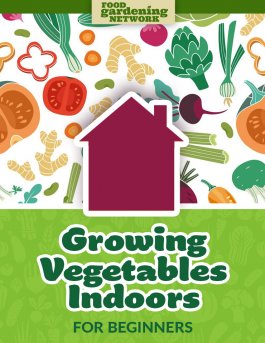
Allow me to share with you why I decided to write about how to bring an outdoor plant inside without bugs. It all began with a lovely little citrus tree.
I love citrus trees, and there’s nothing like a bright pop of yellow lemons or colorful oranges to liven up your home, inside or out. Since I live in Massachusetts, I have to plant citrus in a container so I can move it indoors. No problem there, of course. Some varieties of citrus do quite well in containers.
In fact, I had my citrus tree for a couple of years, faithfully placing it in a sunny outdoor space in the summer and bringing it inside each winter. Then there was last winter.
I don’t know how I missed it, but the tree was infested with spider mites. If that wasn’t bad enough, those spider mites found their way to my hydroponic garden and pretty much murdered the whole thing.
You, dear reader, don’t have to make the mistakes I made. Here’s what I learned about how to bring an outdoor plant inside without bugs coming in with it.
Discover the 3 top options for growing vegetables indoors—when you access the FREEBIE Growing Vegetables Indoors for Beginners, right now!

Make your indoor garden happy: Learn how to bring an outdoor plant inside without bugs
Thanks to my misadventure, I learned a lot about how to bring an outdoor plant inside without bugs. It’s not just bugs, either. Depending on where you live and the size and type of plant, it’s possible that your plants could have frogs, lizards, worms, and other critters you may not want in your home.
Here’s the list I use now to make sure my plants are clean and healthy before I move them inside.
Give yourself plenty of time. It can take a while to thoroughly inspect your plants, repot them if needed, and get rid of possible infestations. If you wait until the last minute, you may have to choose between leaving your vegetables out during a hard frost or bringing in some bugs.
Give your plants a thorough visual inspection. I realize this can take some time if you have a lot of plants, but given that spider mites wiped out my indoor garden, I’m going to say it’s worth the effort. And really, if you’re learning how to bring an outdoor plant inside without bugs, this may be one of the best ways to spot those bugs. Check the stems, tops and bottoms of leaves, and examine the soil. Look for evidence of pests, like chewed leaves or honeydew, that sticky substance left behind by aphids.
Make it rain. Okay, you can’t literally make it rain, but you can spray down your plants with the hose. This will help remove any insects you may have missed, plus it will remove any dust and dirt your plant leaves have accumulated. While you’re at it, give the soil a good soak. That will help with the next step.
Remove plants from pots. Some plants take to this better than others, but if it’s possible without damaging your plant, remove it from the container. At this point, you can check for bugs hiding in the soil, as well as issues like root rot. You can also determine whether the plant is root bound or not and may need a larger container.
Move your plants indoors gradually. If your plants are clear and bug-free, you can begin moving them indoors. However, just like seedlings need to harden off when you transplant them outdoors, it’s helpful to move your plants indoors little by little. Start by bringing them in at night, then move them out during the day. Then leave them in for a day, then two, moving them back outside in between. A big change in climate, light, temperature, and so on can shock a plant, and you want to make sure it stays as healthy as possible to help prevent any bug infestations.
What to do if you find bugs
If you find bugs on your outdoor plants, all is not lost! Iowa State University Extension and Outreach recommends soaking plants in a tub of soapy water before you bring them in. The soap and water get into the soil and can help kill any bugs hiding in there.
There are other methods for dealing with bugs, too, from Neem oil to yellow sticky traps that capture fungus gnats and other small bugs.
You can read about a few methods here and here.
It’s also helpful if you can isolate the infested plant so that other plants don’t get attacked. If the plant is in rough shape, you may need to take it to the compost pile. It’s better to lose a plant or two, even if it’s your beautiful citrus tree, than to lose your entire indoor garden.
Do you have a process for making sure you don’t bring bugs and pests into the house when you move plants indoors for the winter?
Note: Food Gardening Network contains links to affiliate websites, including Amazon and Rakuten Affiliate Network, and we may receive a commission for any eligible purchases made by you through links on this page. Any reviews are based on honest reviews of the products.
Discover the 3 top options for growing vegetables indoors—when you access the FREEBIE Growing Vegetables Indoors for Beginners, right now!





I once brought in a HUGE lizard in a hanging basket and ran into the bedroom until my husband came home, it was that big, but getting back to the delightful lemons…your article is wonderful and very helpful. I once had a lovely Meyer lemon in a container, full of baby lemons and quite a bumper crop. I thought I could plant it in a sunny location as I’m in Louisiana and citrus can grow here…if kept safe some winters. However, in the transplanting most likely at the wrong time, all of the lemons fell off! I’d of done better just bringing it into the nearby laundry room on frosty nights!
Where is the best place to buy container pot fruit trees that can be grown indoors? Thank you. Lynne Herring lch51253@yahoo.com
I always try shopping at my local nursery first. If they don’t have what I’m looking for then they can often order it. Keep small businesses alive and thriving.
Waiting for very cool temps, just short of frost helps destroy pests or at least reduce numbers. Also 1:10 ammonia drench kills pests and fertilizes most plants safely, in my limited experience [70ish yrs!]
The strangest thing I ever brought in with a plant was a bird that cozied up inside a hanging basket on a cold night in Virginia.
I once found a baby snake in my plant. Thank goodness I removed it before taking the plant inside.
If youve got a green house or shed place plants in it then get some pest smokebombs then they should be bug free to bring indoors
I doubt that a smoke bomb would kill anything that is in the soil.